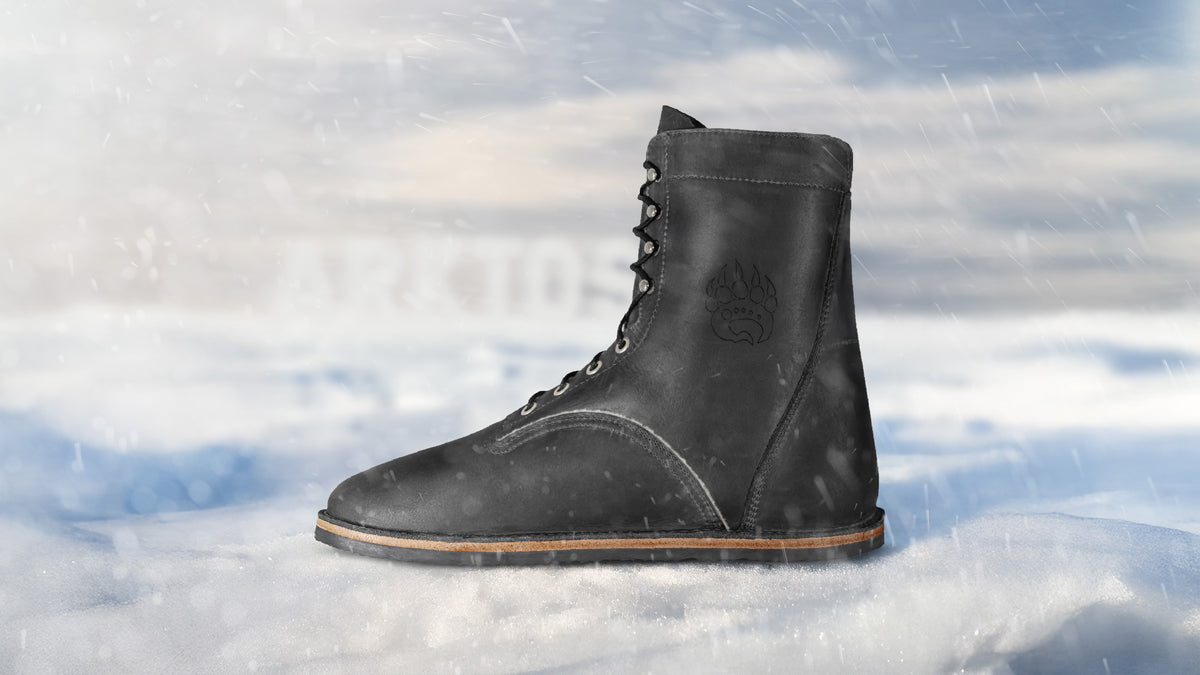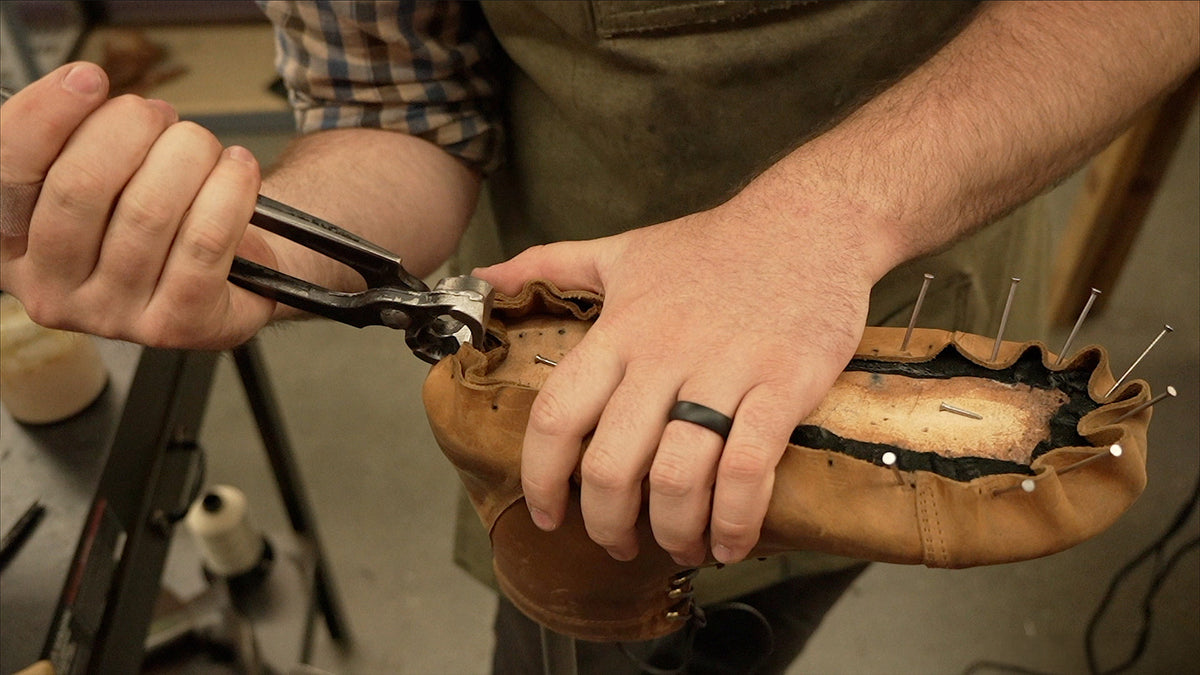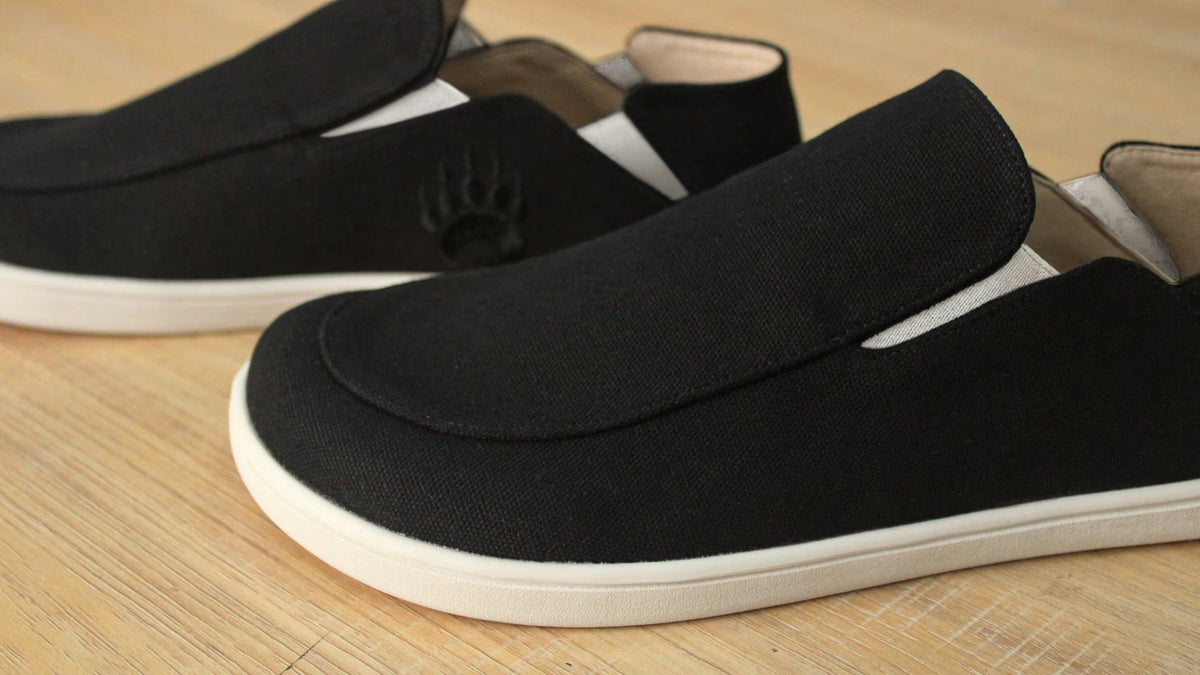The Truth About Traditional Boots: How Raised Heels Undermine Natural Movement
Walk into any shoe store — or any job site, gym, or city street — and you’ll see it everywhere: boots with raised heels. Sometimes it’s subtle, sometimes it’s dramatic, but it’s almost always there. We’ve been conditioned to think that a heel is just how a “real boot” is supposed to look.
But here’s the uncomfortable truth: that heel has nothing to do with modern function, comfort, or performance. It’s a design artifact that predates the automobile, the power rack, and even the light bulb — a relic that stuck around not because it’s better, but because it’s familiar.
The raised heel might look rugged or traditional, but biomechanically, it compromises how the human body is meant to move. And the research backs it up.
A Design Born from Horseback, Not Biomechanics
Long before steel-toes and stitch-down construction, boots were built for one thing: riding horses. In the 1600s and 1700s, cavalry soldiers and couriers wore boots with thick block heels to prevent their feet from sliding through stirrups. The heel acted as a mechanical stop — a simple way to keep the rider anchored when charging into battle or crossing long distances.
When that design reached Europe’s aristocracy, it took on a new purpose. Heels became symbols of wealth and social rank — proof that you didn’t have to walk anywhere. The higher your heel, the higher your status.
Fast-forward a few centuries, and those visual cues survived industrialization. Factories mass-produced heeled boots because that shape was what the market recognized as “authentic.” Even after the horse was replaced by horsepower, the silhouette stayed the same.
So while the world changed, your boots didn’t. You’re still wearing a piece of military history on your feet — even if you’ve never touched a saddle.
Industrial Inertia: Why the Heel Never Went Away
When shoemaking transitioned from local cobblers to industrial production, the focus shifted from function to efficiency. Factories used the same standardized molds — called lasts — to produce thousands of pairs at once.
Raised heels were built into those lasts for two main reasons:
- They simplified manufacturing. The same heel-based mold could be used across multiple product lines — dress shoes, work boots, even women’s footwear — cutting costs.
- They matched consumer expectation. By the late 1800s, the raised heel was so culturally ingrained that a flat shoe looked “unfinished” or “cheap.”
That inertia still defines modern footwear design. Even boots marketed as “ergonomic” or “orthopedic” often have an elevated heel — not because it improves performance, but because it’s what consumers expect to see.
What Science Says About Raised Heels
In recent decades, biomechanics researchers have studied how heel elevation affects posture, muscle function, and joint health. The results are remarkably consistent: even modest heel lift — the kind found on most casual or work boots — causes measurable, lasting changes in how the body moves.
Your Posture Shifts Forward
A study published in Spine (Opila et al., 1988) found that wearing raised heels pushes your center of mass forward, forcing the body to compensate by arching the lower back and bending the knees slightly.
This subtle shift might not feel dramatic at first, but over time it increases stress on the lumbar spine and knee joints. Many people who blame their back or knee pain on “aging” or “bad genetics” are unknowingly fighting against their footwear.
Your Calf Muscles and Achilles Tendons Shorten
Two major studies — one from the Journal of Applied Physiology (Cronin & Barrett, 2008) and another from the Journal of Experimental Biology (Csapo et al., 2010) — examined habitual high-heel wearers and found striking results:
- Shorter gastrocnemius muscle fibers (the main calf muscle)
- Increased Achilles tendon stiffness
- Reduced ankle dorsiflexion — the ability to flex your foot upward
Even heels as low as 3–5 cm caused measurable structural changes. Once those muscles and tendons adapt to being in a shortened position, taking them back to flat ground can feel tight or unstable — exactly the opposite of how your feet should feel.
Your Joints Take the Hit
A landmark Lancet study (Kerrigan et al., 1998) found that heel elevation increases torque on the knee joint, mimicking the stress patterns seen in early osteoarthritis. In simpler terms: every inch of heel height adds more compressive force to your knees with each step.
That means even the “comfortable” half-inch lift in many casual boots contributes to gradual wear and tear over time.
Your Balance and Feedback Suffer
Your feet are rich with sensory nerves that constantly relay information about balance, texture, and force. This feedback loop — called proprioception — helps you stay stable and react quickly.
Research in Gait & Posture (Stefanyshyn et al., 2000) and Human Movement Science (Hong et al., 2005) shows that heel elevation alters natural gait mechanics and reduces postural stability.
It’s no coincidence that people often feel “off balance” when switching from heeled footwear to minimalist shoes — their nervous system has been desensitized by years of interference.
Even a Small Heel Makes a Big Difference
Perhaps the most eye-opening data comes from Journal of Orthopaedic & Sports Physical Therapy (Franklin et al., 1995), which demonstrated that a heel as low as 2.5 cm — roughly one inch — alters ankle and knee angles during walking.
That means even so-called “low-profile” work boots still distort natural mechanics. Your feet don’t care whether the heel is two inches or half an inch — any artificial elevation changes how your body moves.
The Comfort Illusion
Raised heels often feel comfortable at first because they reduce the demand on tight calves and make standing feel familiar. That’s not comfort — that’s compensation.
Soft midsoles, thick cushioning, and elevated heels create the illusion of support, but they come at a cost:
- Your stabilizing muscles turn off.
- Ground feel disappears.
- Your joints absorb impact instead of your muscles.
In biomechanics, “comfortable” doesn’t always mean “healthy.” True comfort is the kind that lasts after hours of standing, walking, or lifting — and that comes from alignment and balance, not artificial lift.
What Happens When You Return to Zero
A zero-drop shoe (meaning the heel and forefoot sit level) realigns your entire kinetic chain. Here’s what that means in practical terms:
- Your posture stabilizes. Your spine, hips, and knees stack naturally, reducing strain on the lower back.
- Your muscles re-engage. Intrinsic foot muscles, calves, and glutes work together again — improving strength and circulation.
- Your balance improves. With full ground contact and proprioceptive feedback, your reactions become faster and more precise.
- You move more efficiently. Force transfers directly from your legs to the ground without energy loss through compressible foam or heel pitch.
These benefits are exactly why barefoot shoes are so popular among lifters, athletes, and people who spend long hours on their feet. When the heel disappears, so do the inefficiencies.
Why Most Boots Still Get It Wrong
The irony is that most “performance” or “work” boots today are built on outdated geometry. Even models advertised as ergonomic or “biomechanically engineered” usually include:
- ½–1 inch heel rise
- Narrow, tapered toe boxes
- Thick midsoles that mute ground feel
These design elements might pass visual inspection — they look sturdy, masculine, or traditional — but they ignore how the foot actually functions.
Your foot isn’t a wedge. It’s a dynamic structure that relies on even load distribution and mobility. The moment you elevate one end, everything above it compensates.
Tradition Isn’t Truth
If you trace the lineage of footwear back far enough, you’ll find that flat, flexible shoes were the original design. For most of human history, people walked, ran, and worked without raised heels, arch supports, or motion-control technology.
Our ancestors didn’t have “minimalist” shoes — they simply had shoes. Functionally neutral footwear was the norm for thousands of years, until industrial production — and marketing — redefined what shoes were supposed to look like.
So when brands like Bearfoot advocate for zero-drop design, we’re not inventing something new. We’re removing the unnecessary layers that modern footwear added and returning to what’s natural, strong, and sustainable.
The Barefoot Approach: Built to Move, Not Impress
At Bearfoot, every design starts from the ground up — literally.
We strip away what doesn’t belong: raised heels, rigid midsoles, and narrow toe boxes. What’s left is a boot that lets your body do what it’s designed to do.
- The Ursus — A zero-drop training and lifestyle shoe that strengthens your feet with every step.
- The Bruin — A rugged outdoor boot that blends durability with full ground connection.
- The Arktos — A winter-ready barefoot boot lined with merino wool, built to keep you warm without disconnecting you from the earth beneath you.
All three share the same foundation: a flat, stable platform that respects human anatomy. No raised heels, no false support — just authentic movement.
Why This Matters Beyond the Gym
This isn’t just about lifting performance or athletic training. It’s about longevity.
Your feet are your foundation — every step, every lift, every mile starts there. If that foundation is tilted forward, your entire structure compensates. Over time, those small adjustments accumulate into chronic issues: plantar fasciitis, knee pain, hip tightness, lower-back discomfort.
Restoring a neutral foundation through zero-drop footwear doesn’t just improve movement — it can help reverse years of dysfunction caused by modern shoes.
The Takeaway
Raised heels made sense for soldiers on horseback. They don’t make sense for athletes, workers, or anyone who values long-term strength and mobility.
The science is clear: even small heel lifts change posture, reduce ankle mobility, increase joint stress, and impair balance. The solution isn’t more technology — it’s less interference.
Your body doesn’t need help standing tall — it just needs room to function the way it was designed.
Next time you lace up, ask yourself: Is my footwear supporting natural movement, or fighting against it?
References
- Opila, K. A., et al. (1988). Postural alignment in barefoot and high-heeled stance. Spine, 13(5), 542–547.
- Cronin, N. J., & Barrett, R. (2008). Calf muscle-tendon behaviour and architecture in habitual high-heel wearers. Journal of Applied Physiology.
- Csapo, R., et al. (2010). Habitual high-heel wearers exhibit shorter gastrocnemius muscle fascicles and greater Achilles tendon stiffness. Journal of Experimental Biology.
- Kerrigan, D. C., et al. (1998). Knee osteoarthritis and high-heeled shoes. The Lancet.
- Stefanyshyn, D. J., et al. (2000). The influence of high-heeled shoes on stability and balance. Gait & Posture.
- Hong, W., et al. (2005). Effect of shoe heel height on standing balance and functional mobility in young and older women. Human Movement Science.
- Franklin, M. E., et al. (1995). Effect of heel height on posture and joint angles. Gait & Posture.



